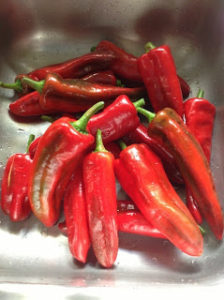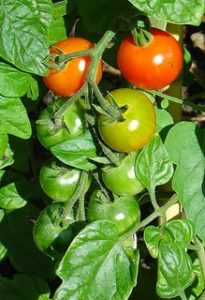The other day I was poking around online reading about rocks and dinosaurs when I should have been working, and I discovered that what I knew as the Cretaceous–Tertiary (KT) boundary is also called the Cretaceous–Paleogene (KP) boundary. (K is used instead of C to make it easier to pronounce.) You may be familiar with this boundary as marking the extinction of the dinosaurs roughly 65 million years ago. Well, one thing led to another, and I learned some interesting things about the names of recent geologic periods and epochs.
Geologists originally categorized Earth’s crustal rocks from oldest to most recent as Primary, Secondary, Tertiary, and Quaternary. Because each type was associated with a particular period in Earth’s history, you could also talk about, for example, the Tertiary period. However, most of these geological time periods have since been placed into a larger framework, broken down into finer-grained subdivisions, and given generally more informative names.
As part of this process, the Tertiary (66 million to 2.6 million years ago) and the Quaternary (2.6 million years ago to the present day) were once assigned to the Cenozoic era. (Eras are longer than periods but shorter than eons.) However, as scientists learned more about the fossils of the Cenozoic, it began to make more sense to split the Tertiary itself into two periods, the Paleogene and the Neogene, on the basis of the fossils found in rocks of each period. These names were proposed in Europe and adopted only slowly by North American geologists.
The Paleogene is the older of the two periods; the name comes roughly from the Greek phrase ancient-born. However, it’s part of the Cenozoic era, which translates more or less as recent life. (The Cenozoic is preceded by the Mesozoic and Paleozoic: middle life and ancient life, respectively.) Ceno- comes from the Greek word kainos, meaning new or recent, and we also see this root in the -cene ending in the sequence of epochs running from the Paleocene to the Holocene.
Wait, Paleocene? Wouldn’t that mean something like ancient recent? Indeed it would. Not only is the Paleogene (ancient-born) part of the Cenozoic (recent life), but the Paleocene epoch could be translated as something like the ancient recent epoch.
It actually makes perfect sense. Compared to the Paleozoic, which stretches from 541 million years ago to 252 million years ago, the Cenozoic is recent indeed. However, the Cenozoic itself contains older and more recent epochs. Imagine that you trade in your old car for a new one frequently; you may find yourself explaining to a confused friend that the Toyota was your old new car, and your new new car is a Honda. It’s something like that with the -cene epochs, all more recent than what came before but needing to be subdivided somehow according to their relative ages.
From oldest to most recent, these epochs are the Paleocene, Eocene, Oligocene, Miocene, Pliocene, Pleistocene, and Holocene. The names Paleocene and Holocene make nice bookends: the ancient recent epoch and the entirely recent epoch (holo- comes from the Greek word for whole, which we also see in holographic and holistic). The epochs in between make sense, although evidently not if you know much about Greek grammar.
Eo- comes from eos, the Greek word for dawn, and is used to describe the earliest appearance of something, in this case modern fossils. Oligo-, mio-, plio-, and pleisto- are based on Greek words ranging in meaning from few to most, and they refer to increasing numbers of modern fossils, or increasing degree of recentness. H.W. Fowler, in his Dictionary of Modern English Usage, took a very dim view of these coinages, or, as he called them, “regrettable barbarisms.” His entry for Miocene described the word as
A typical example of the monstrosities with which scientific men in want of a label for something, and indifferent to all beyond their own province, defile the language. The elements of the word are Greek, but not the way they are put together, nor the meaning demanded of the compound.
If this seems harsh, keep in mind that in the 19th century when these names were coined, every educated person was expected to have learned Greek. Fowler made this point not because he thought the words could be changed; he knew they were too well-established for that. His hope was that scientists “may some day wake up to their duties to the language—duties much less simple than they are apt to suppose.” I’m guessing that he would also find the recent coinage Anthropocene similarly wanting or perhaps even worse. However, he is not here to comment, and my more recent edition of Fowler’s Modern English Usage, edited by R. W. Burchfield, is far more temperate, noting that “the time has come for the hatchet to be buried. A simple irreg. suffices” to characterize these words.
The geologic time scale is a fascinating thing full of evocative names. We’ll come back to it again, I’m sure.
Learn more:
- Geologic time scale from the University of California Museum of Paleontology
- Geologic time scale article from Wikipedia (more detail on the history)
- Article on the Anthropocene from Space.com




